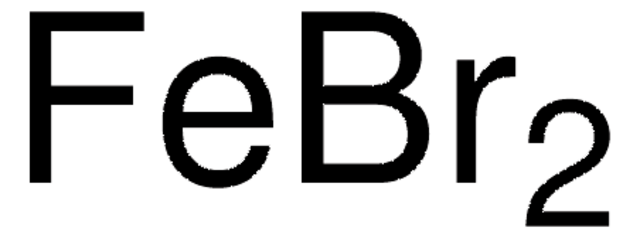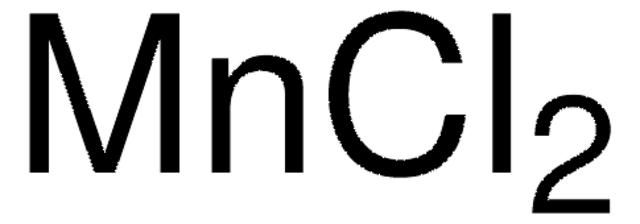Wichtige Dokumente
450936
Eisen(II)-chlorid
AnhydroBeads™, −10 mesh, 99.99% trace metals basis
Synonym(e):
Eisenchlorid, Eisendichlorid
About This Item
Empfohlene Produkte
Qualität
for synthesis
synthesis grade
Produktlinie
AnhydroBeads™
Assay
99.99% trace metals basis
Verunreinigungen
≤150.0 ppm Trace Metal Analysis
Partikelgröße
−10 mesh
mp (Schmelzpunkt)
677 °C (lit.)
Dichte
3.16 g/mL at 25 °C (lit.)
Anwendung(en)
battery manufacturing
SMILES String
Cl[Fe]Cl
InChI
1S/2ClH.Fe/h2*1H;/q;;+2/p-2
InChIKey
NMCUIPGRVMDVDB-UHFFFAOYSA-L
Suchen Sie nach ähnlichen Produkten? Aufrufen Leitfaden zum Produktvergleich
Allgemeine Beschreibung
Anwendung
- A doping agent in the fabrication of mixed organic-inorganic perovskite for high-efficiency perovskite solar cells. The incorporation of iron(II) chloride improve the overall efficiency of the solar cell.
- A precursor for synthesizing various iron(II) coordination complexes. These complexes are significant due to their unique optical and electronic properties, which are essential for various applications, including solar energy conversion and catalysis.
- As a precursor in the synthesis of iron-nitrogen-carbon (Fe–N–C) catalysts for proton exchange membrane fuel cells.
Rechtliche Hinweise
Zubehör
Signalwort
Danger
H-Sätze
Gefahreneinstufungen
Acute Tox. 4 Oral - Eye Dam. 1
Lagerklassenschlüssel
8B - Non-combustible corrosive hazardous materials
WGK
WGK 1
Flammpunkt (°F)
does not flash
Flammpunkt (°C)
does not flash
Persönliche Schutzausrüstung
Eyeshields, Faceshields, Gloves, type P3 (EN 143) respirator cartridges
Hier finden Sie alle aktuellen Versionen:
Besitzen Sie dieses Produkt bereits?
In der Dokumentenbibliothek finden Sie die Dokumentation zu den Produkten, die Sie kürzlich erworben haben.
Kunden haben sich ebenfalls angesehen
Artikel
Plasmonic nanoparticles have unique optical properties that can be tailored to suit a variety of applications in the biotechnology1–8 and electronics9–16 industries.
Unser Team von Wissenschaftlern verfügt über Erfahrung in allen Forschungsbereichen einschließlich Life Science, Materialwissenschaften, chemischer Synthese, Chromatographie, Analytik und vielen mehr..
Setzen Sie sich mit dem technischen Dienst in Verbindung.










